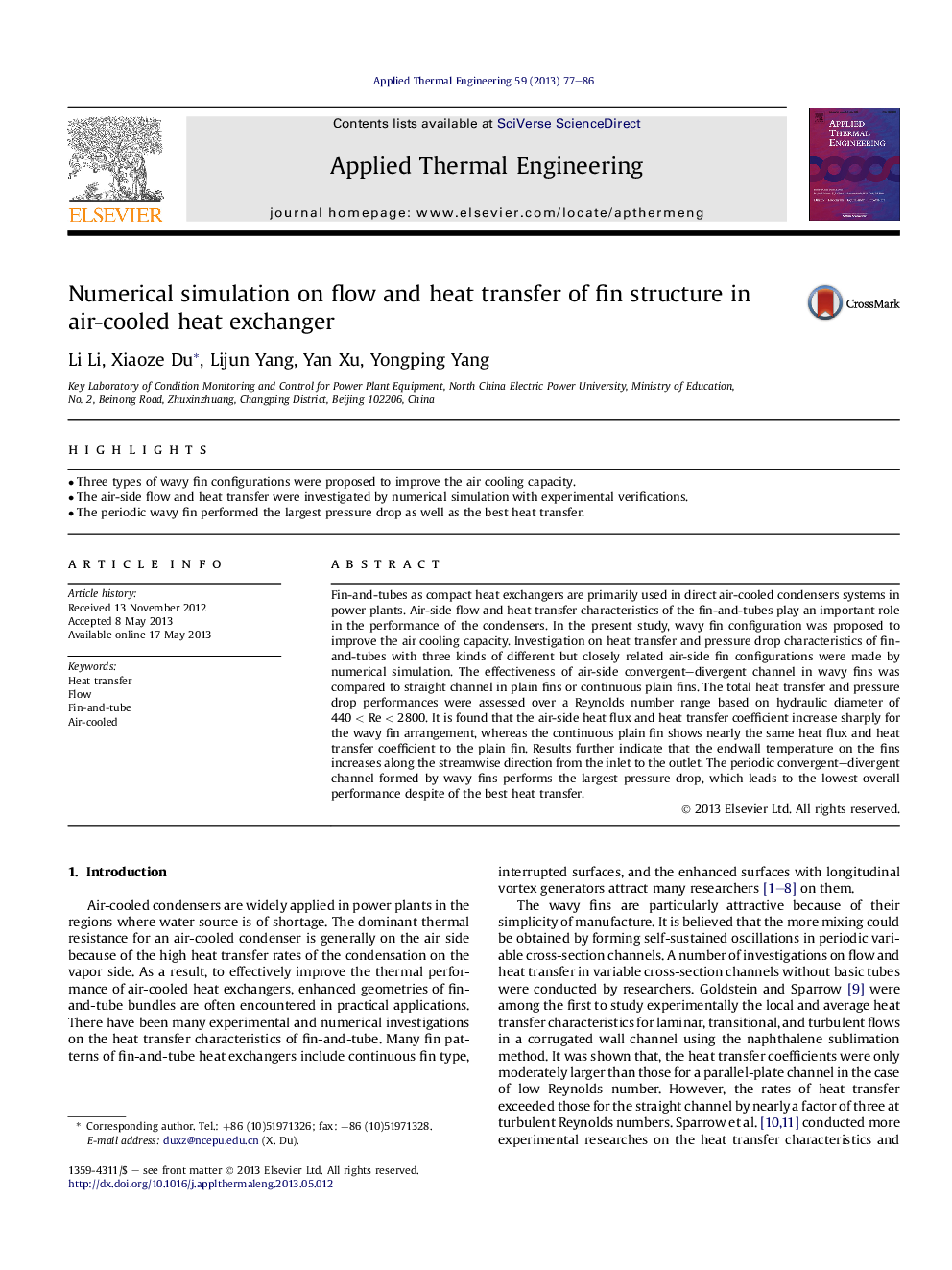| Article ID | Journal | Published Year | Pages | File Type |
|---|---|---|---|---|
| 7049961 | Applied Thermal Engineering | 2013 | 10 Pages |
Abstract
Fin-and-tubes as compact heat exchangers are primarily used in direct air-cooled condensers systems in power plants. Air-side flow and heat transfer characteristics of the fin-and-tubes play an important role in the performance of the condensers. In the present study, wavy fin configuration was proposed to improve the air cooling capacity. Investigation on heat transfer and pressure drop characteristics of fin-and-tubes with three kinds of different but closely related air-side fin configurations were made by numerical simulation. The effectiveness of air-side convergent-divergent channel in wavy fins was compared to straight channel in plain fins or continuous plain fins. The total heat transfer and pressure drop performances were assessed over a Reynolds number range based on hydraulic diameter of 440 < Re < 2800. It is found that the air-side heat flux and heat transfer coefficient increase sharply for the wavy fin arrangement, whereas the continuous plain fin shows nearly the same heat flux and heat transfer coefficient to the plain fin. Results further indicate that the endwall temperature on the fins increases along the streamwise direction from the inlet to the outlet. The periodic convergent-divergent channel formed by wavy fins performs the largest pressure drop, which leads to the lowest overall performance despite of the best heat transfer.
Related Topics
Physical Sciences and Engineering
Chemical Engineering
Fluid Flow and Transfer Processes
Authors
Li Li, Xiaoze Du, Lijun Yang, Yan Xu, Yongping Yang,
